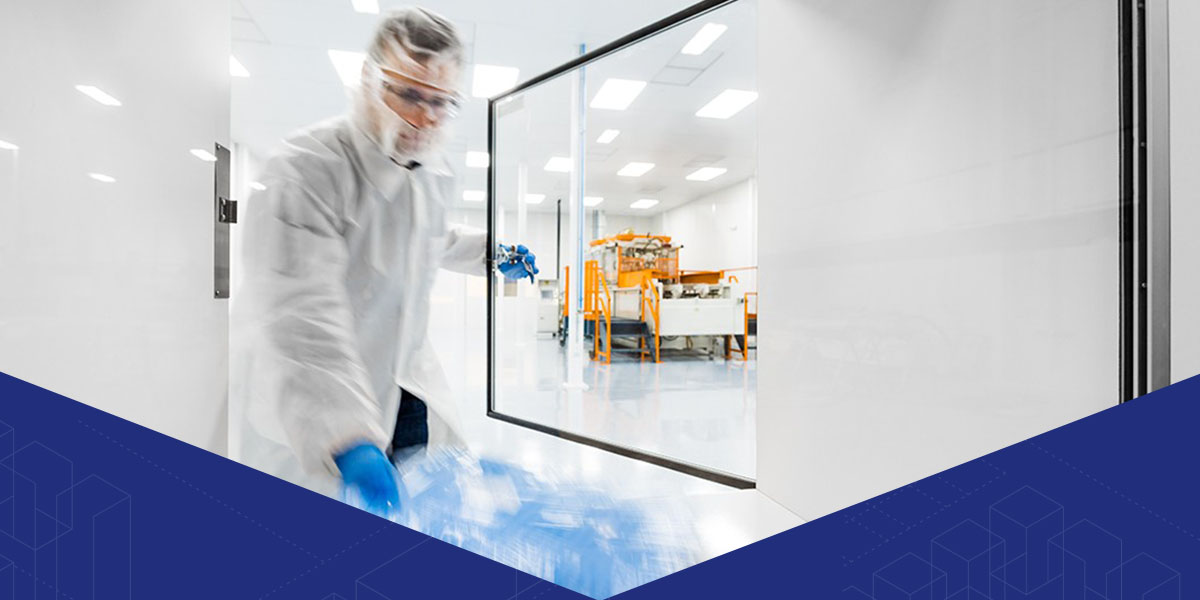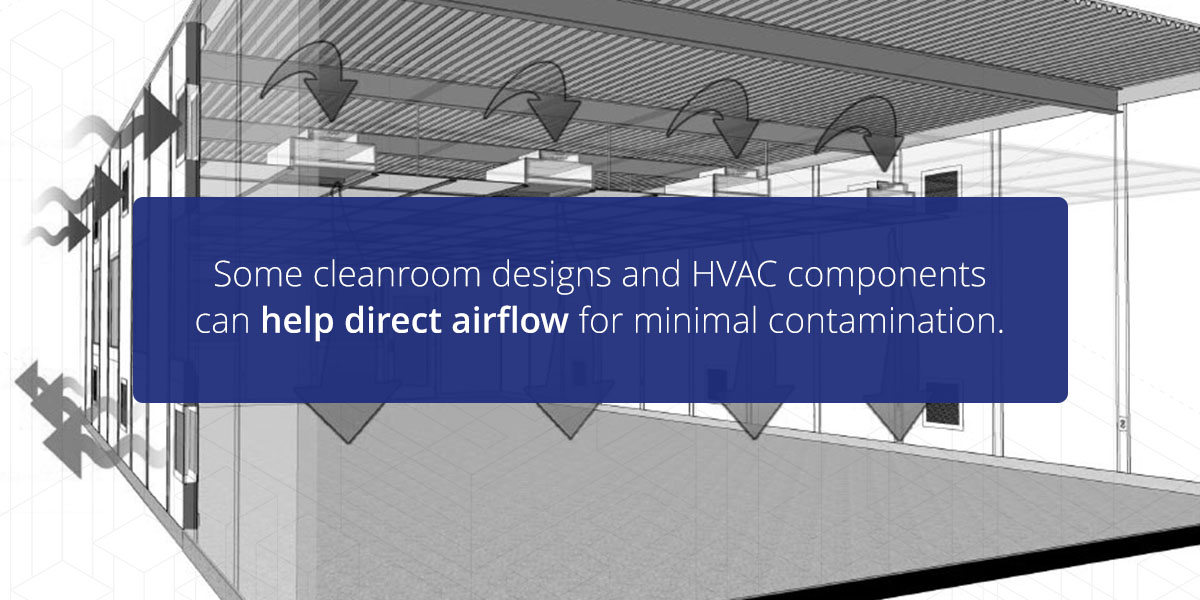


One of the defining features of a cleanroom is incredibly clean air. A cleanroom — whether modular or fixed — must meet strict requirements related to air quality, from temperature and humidity to pressure and particulate matter. Ventilation controls many elements that can lead to contamination, such as particles being carried through the air or a humid environment that facilitates bacterial growth. To avoid these situations, Standards organizations have created requirements and classification systems to minimize contamination.
Meeting ventilation requirements for cleanrooms calls for a thorough understanding of how the heating, ventilation and air conditioning (HVAC) systems work in cleanrooms and the industry standards that often dictate their design.
A modular cleanroom is simply a cleanroom that’s easy to modify, relocate or expand. It can accommodate any cleanroom classification, offering an environment that controls aspects like temperature, relative humidity and airflow to various specifications. Modular cleanrooms use strong seals and components built for the job to provide comparable performance to conventional cleanrooms.
Like the HVAC system in your home, HVAC for a cleanroom is designed to improve indoor air quality. Unlike your home’s HVAC, a cleanroom system offers much more power and precision. Industry requirements usually determine what capabilities an HVAC system must support. Here are some aspects of air quality that a cleanroom HVAC system can address.
Air changes per hour (ACH) refers to the number of times the air inside a space is completely removed and replaced with fresh, clean air each hour. A parts manufacturer might use its cleanroom to limit contaminants on the finish of a product. Since the manufacturer is mostly concerned about large particles that could be seen on the surface, they likely don’t need a high ACH. Alternatively, a pharmaceutical producer might need hundreds of air changes every hour to avoid adverse effects on the product.
Filters determine how well particles of different sizes are captured during air filtration. Most cleanrooms need either a high-efficiency particulate air (HEPA) filter or an ultra-low particulate air (ULPA) filter. Both options have layers of fine mesh woven together to catch particles as the air moves through the filter. HEPA filters remove 99.97% of particles of 0.3 microns (µm) or larger. ULPA filters remove more and smaller particles.
The type of particles in the air and the level of cleanliness required will determine which kind of filter is appropriate for a cleanroom.
Proper air flow is crucial for covering enough ground in a cleanroom. The fans in an HVAC system must be capable of moving air throughout the entire space. Cubic feet per minute (CFM) reflects the volume of air that a system can move in one minute. Many factors will affect your cleanroom’s HVAC calculation for CFM, like the number of people and items in the room, the amount of heat generated, and the size of the rooms. Choosing the appropriate value here ensures the room’s HVAC system is properly sized.
The air’s pathway through the room can also impact its cleanliness and access to the HVAC system. Some cleanroom designs and HVAC components can help direct airflow for minimal contamination.

The air conditioning in an HVAC system removes excess moisture from the air and helps keep it at the right temperature. Since some temperatures create risks for contamination, the air conditioning requirements can be quite strict.
Pressure differentials occur when the pressure inside the cleanroom is higher or lower than the pressure outside the room. When someone opens the doors, air will either flow in or out. Most cleanrooms use negative pressure, causing air to flow outward. Contaminants from the outside space get carried away from the cleanroom rather than into it.
The HVAC system controls the pressure differential and maintains the correct balance through the supply and exhaust fans.
Both modular and fixed cleanrooms must often meet industry standards. These standards are typically set by the International Organization for Standardization (ISO), the United States Food and Drug Administration (FDA) or the European Medicines Agency (EMA). Each organization outlines design and performance requirements for cleanrooms in different applications, with ventilation playing a key role in reducing contamination risk. The standards also dictate aspects like surface sanitation and employee training.
One of the most common standards used for cleanroom designs is ISO 14644. This standard identifies nine classes, with Class 1 representing the cleanest room. A Class 1 room would use specific materials and HVAC system components for strict contaminant-free operations. Class 9 reflects standard indoor air.
Classes 7 and 8 are common in manufacturing environments, while medical labs, food and drink producers and pharmaceutical manufacturers usually need higher classes. Other industries that frequently depend on cleanrooms include semiconductor fabricators, research facilities and medical device manufacturers. Even if not required, these standards can provide a convenient guideline and help boost the company’s credentials.
The ISO classes outline many ventilation and air quality requirements, such as:
Another commonly used standard is Good Manufacturing Practices (GMP) or Current Good Manufacturing Practices (cGMP). These standards are created and enforced by the FDA in the US and the EMA in Europe. Instead of classes, GMP uses grades A through D. Grade A applies to stricter applications like medical device and pharmaceutical manufacturing. Grade D isn’t as strict and may be used for less demanding manufacturing operations.
Whichever standards your organization must meet, the cleanroom ventilation design and HVAC system should work in tandem with each other to limit exposure to contaminants.
Modular cleanrooms can provide cleanliness on par with traditional cleanrooms, but they offer much more flexibility for your operation. When you work with the experts at Starrco, you get a team that understands these requirements inside and out. We’ll help you select the precision-engineered components that work best with your HVAC system and your cleanliness requirements. Then, we can install the system in as little as three days and provide ongoing support.
Learn more about what makes Starrco’s modular systems different, or reach out for a free quote today!